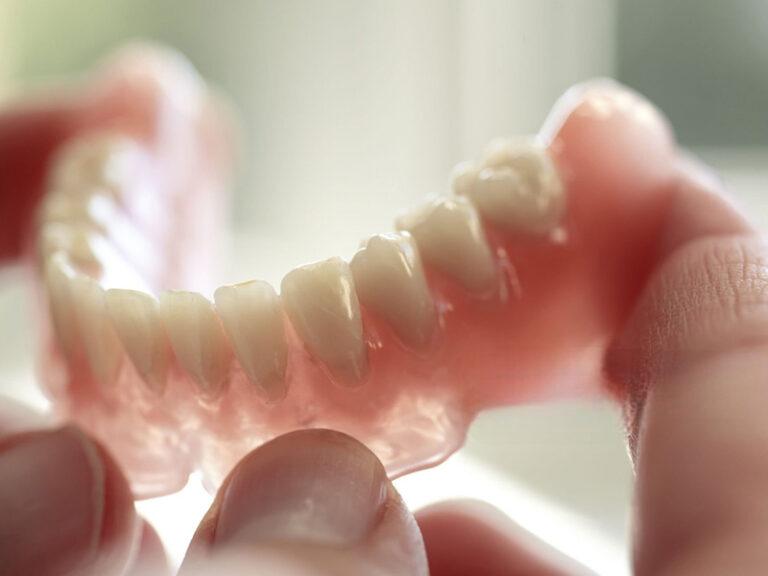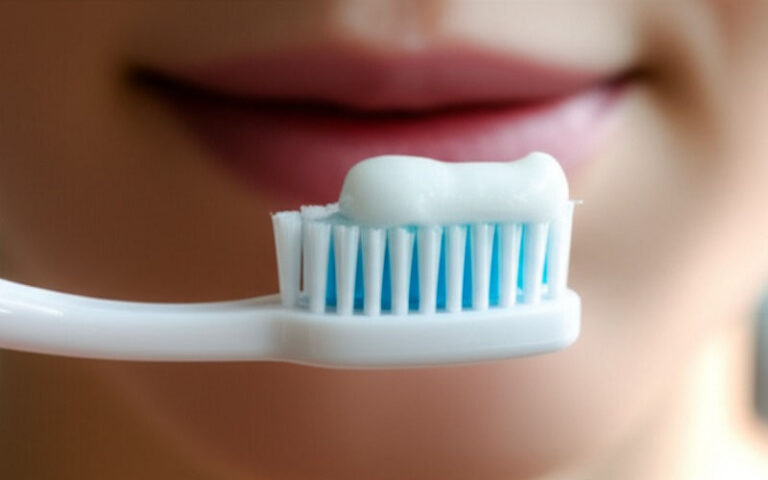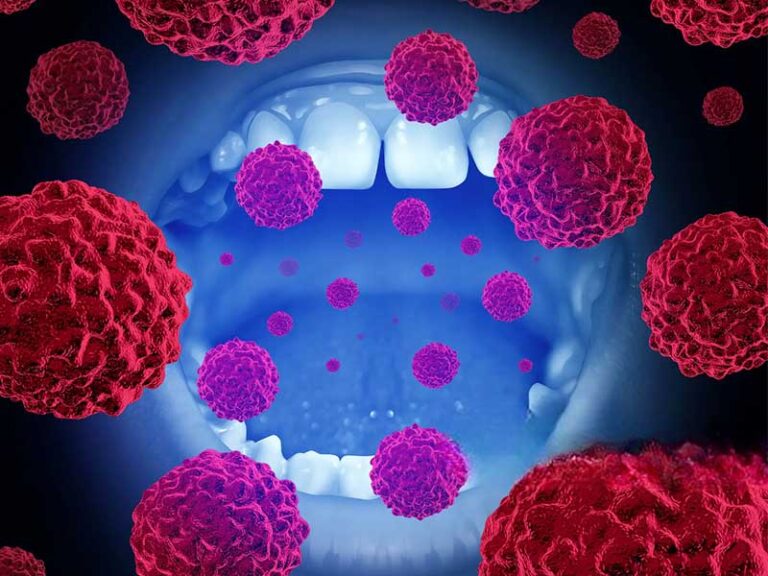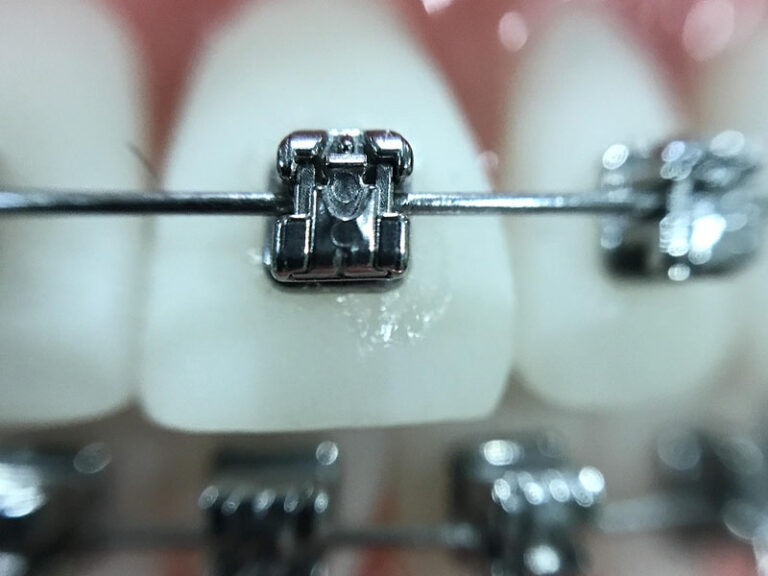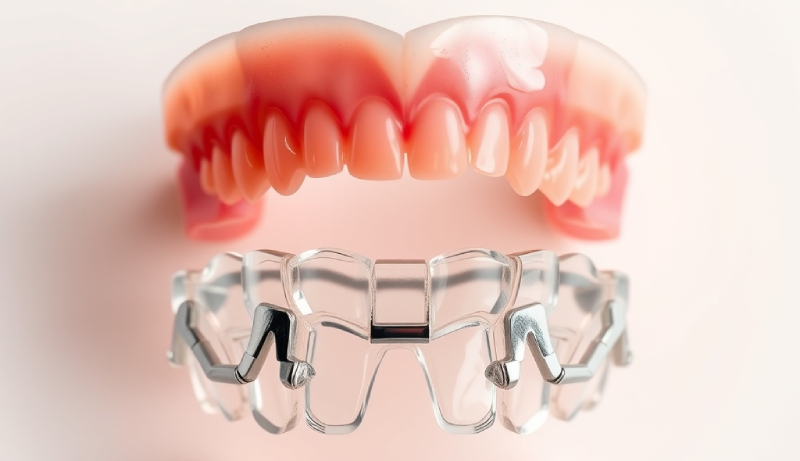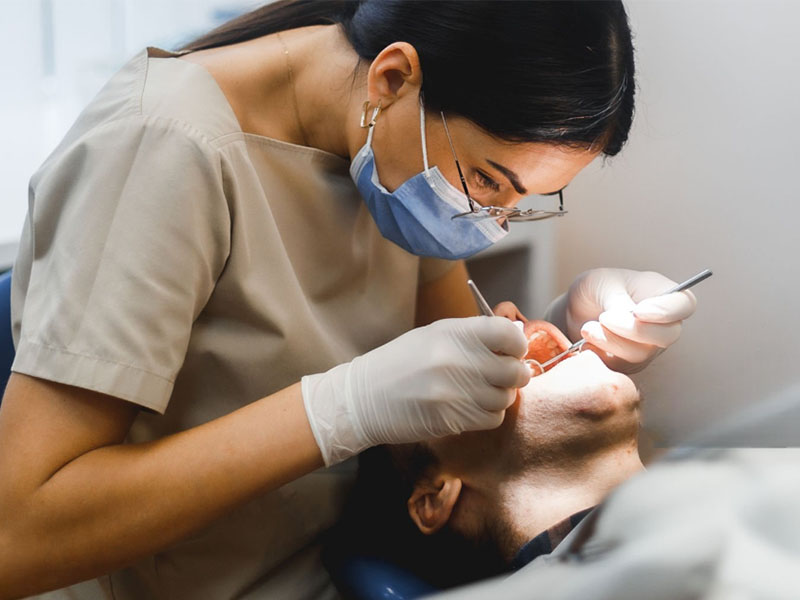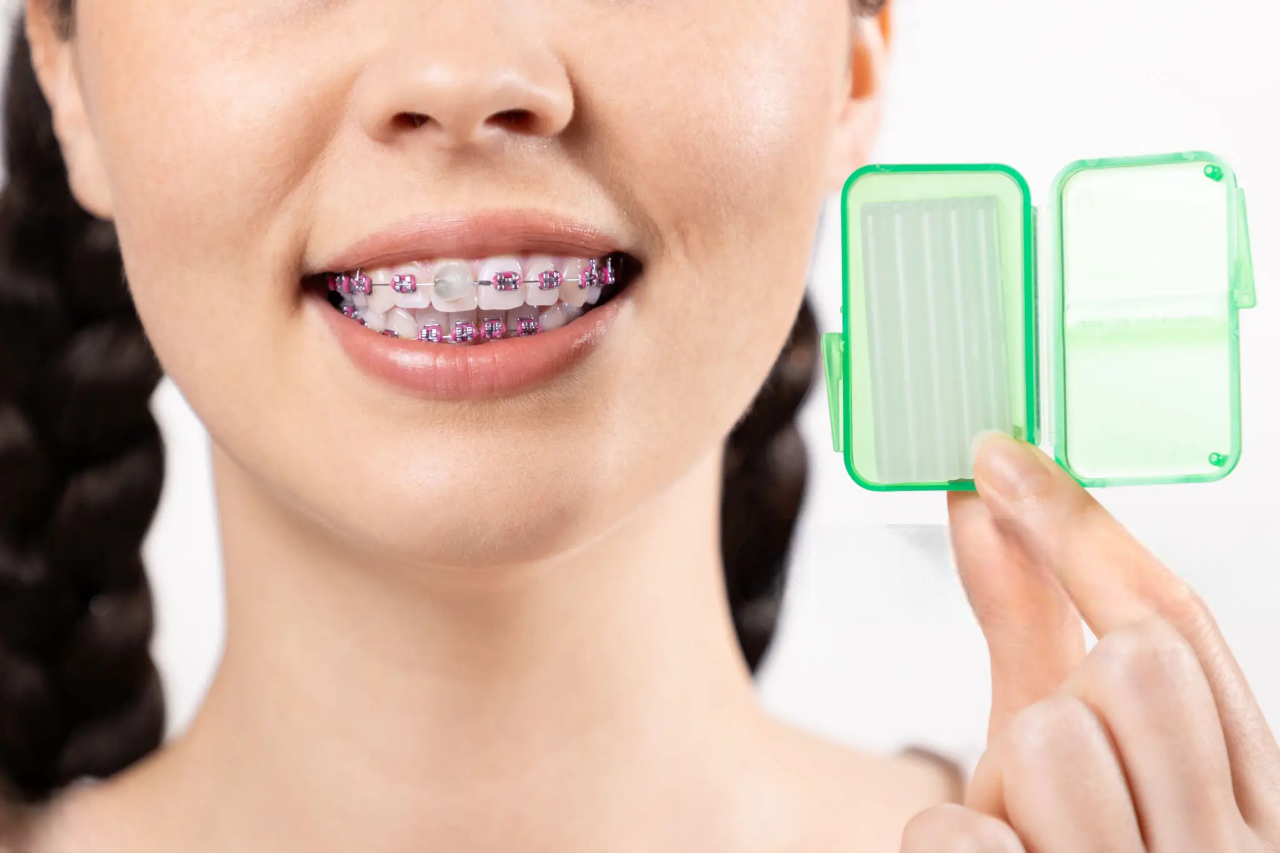
Orthodontic Wax: Your Best Friend for Braces Comfort
Find out how orthodontic wax gives you quick relief from braces pain, protects your mouth, and makes your time with braces easier. Learn when and how to use this important tool.
Table of Contents
Introduction
I’ll never forget the first day I got my braces. My excitement about finally starting my teeth-straightening process quickly went away as I felt the sharp wires and poky brackets. By the end of the day, feeling sore was my new normal. I knew that straightening teeth would take work, but nobody told me about the soreness and tiny cuts inside my mouth.
That’s when I found orthodontic wax—a small, simple tool that turned out to be my best helper. If you’re just starting your time with braces, or even if you’ve had them for a while and still feel sore, orthodontic wax can make a huge difference. In this article, I’ll explain everything I’ve learned about orthodontic wax: what it is, how it works, the best ways to use it, and why every person with braces should have some.
Understanding Braces Pain: Why Your Mouth Needs a Friend
When I got braces, I thought my teeth would just be a little sore as they started moving. What surprised me was how much my cheeks and lips got hurt by the sharp brackets and poking wires.
Why does this happen?
Braces have a lot of parts. Brackets stick out from the teeth, archwires run along the brackets, and sometimes there are little hooks or ties. All of this can lead to points and edges that rub against the soft parts of your mouth—cheeks, lips, gums, and even your tongue. It doesn’t take long for all that rubbing to cause soreness, redness, or even painful mouth sores.
I soon learned I wasn’t the only one. According to a recent survey, about 85% of new braces wearers feel some kind of pain in the first few weeks. Another study said that 70% of us get sores in the soft parts of our mouths. That’s almost everyone! For me, the biggest problem was with everyday things—eating was hard, talking felt strange, and some nights, I couldn’t even sleep well because of the pain.
Quick Relief is Important
Let me tell you, my mouth needed help fast. If you let the rubbing continue, it often leads to actual sores, which can take days (or longer) to heal. That’s not just painful, it can make you get tired of the whole braces process. Getting relief early lets your mouth get used to the braces, and in my experience, the faster you do something, the easier everything gets.
What is Orthodontic Wax and How Does It Work?
To be honest, at first I wasn’t sure it would work. Someone at my orthodontist’s office handed me a tiny box of orthodontic wax and told me it would help. It didn’t look like anything special. How could this clear strip of wax make a difference?
The Science in Simple Words
Orthodontic wax is a special product that is safe for your body, usually made from smooth, safe things like paraffin, carnauba wax, beeswax, or sometimes silicone. The magic behind it is simple: when you press it over your brackets or wires, it makes a thin, soft shield. This shield stops the metal parts from rubbing against the soft, delicate parts of your mouth.
Is it Safe?
This was a big worry for me. I always worried about putting something strange in my mouth, especially after hearing bad stories online. Luckily, orthodontic wax is made to be non-toxic, which means it’s not poisonous. Most brands use ingredients that are perfectly safe, even if you accidentally swallow a little while eating or sleeping. Still, it’s best not to treat it like gum—you don’t want to eat it on purpose! I found it’s easier to take it off before meals, but if a little bit goes down, you don’t need to worry.
How Long Does It Stay On?
For me, putting it on once kept it there for a few hours, depending on if I was eating or talking a lot. You’ll probably need to put a new piece on after meals, and definitely after brushing your teeth.
When and How to Use Orthodontic Wax the Right Way
If I can give just one tip, it’s this: don’t wait until you have a big, red sore before you grab your orthodontic wax. Stopping a problem before it starts is much better.
Knowing When You Need Wax
Everyone’s time with braces is a little different, but I’ve found wax most helpful in these moments:
- The first week with new braces, when everything feels weird and rough
- After a check-up, when wires and brackets are tightened or moved
- If a wire comes loose and starts poking your cheek or tongue
- When any new sharp edge shows up, like a broken bracket
Sometimes, even after months, a power chain or hook can suddenly start to hurt. Pay attention to what your mouth is telling you—if it hurts, it’s time to use wax.
Step-by-Step Guide for Putting on Wax
Here’s the way that works for me (and, really, I can do it without thinking now):
- Wash Your Hands You don’t want to put germs in your mouth.
- Dry the Spot Use a tissue or a corner of your shirt. The bracket or wire needs to be as dry as you can get it, or the wax won’t stick.
- Pinch Off a Small Piece Think of a pea or a small bead. You don’t need a lot.
- Roll It into a Ball Rolling the wax in your fingers warms it up so it’s easier to shape.
- Place and Press Firmly push the ball of wax over the part that’s causing trouble—like a broken wire, rough bracket, or hook. Gently flatten the edges so it stays on.
- Smooth it Out Use a finger to make sure there’s no bump or sharp edge still showing.
That’s all you have to do. If you eat or brush your teeth, just take the wax off and put a new piece on afterward.
Tips for the Best Results
- Act Early: Put wax on as soon as you feel pain, even before a sore shows up.
- Change It Often: After meals or brushing, use a new piece of wax.
- Try to Take It Off When Eating: Some people like to take it off during meals, since food usually knocks it loose anyway.
- Use at Bedtime: If you tend to wake up with new sores, a little wax before sleep can stop rubbing overnight.
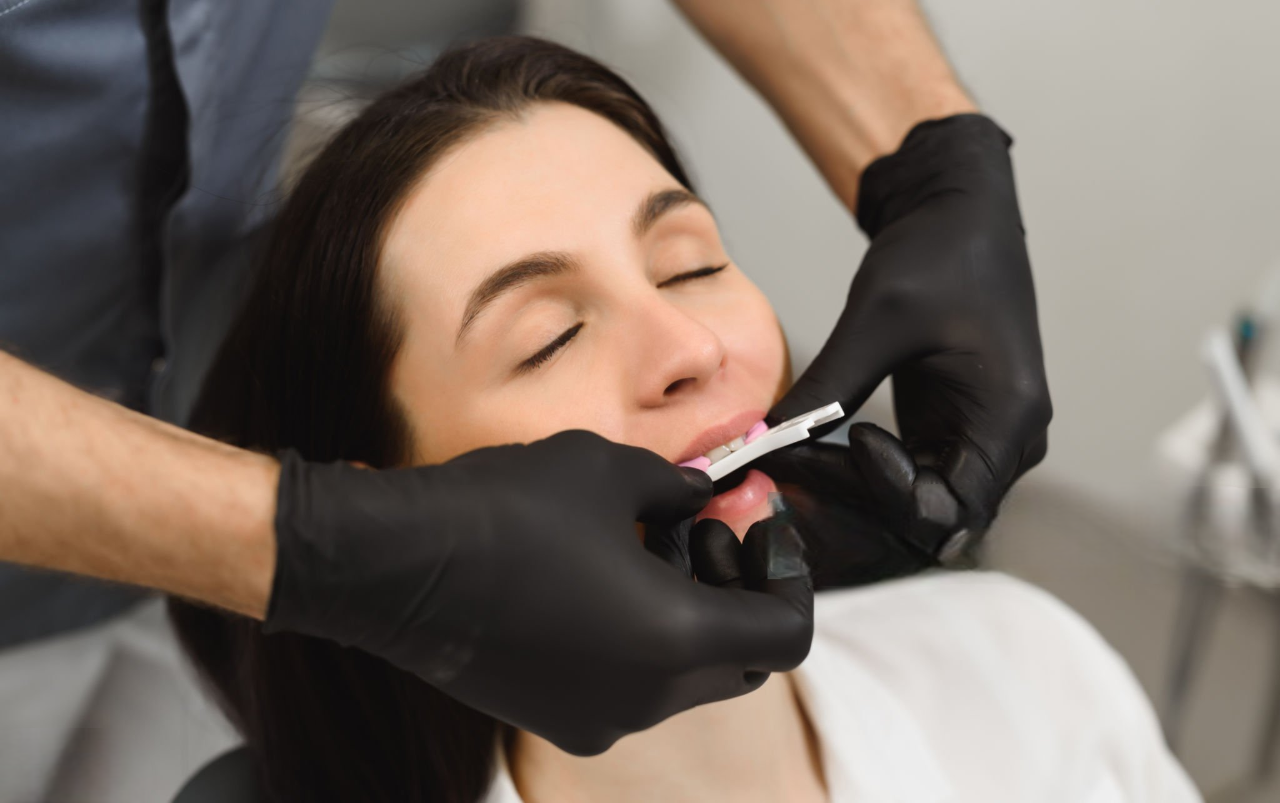
The Other Good Things: Why Orthodontic Wax is Your Braces.MD Helper
I used to think orthodontic wax was just for comfort. Now I see it’s much more than that—it’s a very important tool in my braces toolkit.
1. Quick Pain Relief
Sometimes, one bracket can make eating or talking feel awful. Putting wax on it right away cushions those sharp edges. For me, the difference was huge. Suddenly, I could think about something other than the inside of my mouth.
2. Stops Sores from Forming
The real benefit is stopping problems before they get worse. Once I started using wax all the time, I got way fewer mouth sores.
3. Helps Sores Heal
Even if I waited too long and got a sore, covering the spot with wax let it heal without being bothered. My orthodontist explained that the soft parts of the mouth heal fastest when they are protected from more rubbing.
4. Makes You More Comfortable After Check-ups
Braces aren’t something you get and then forget about. Every tightening or change can leave new spots that hurt. Wax makes those first few days after a visit so much easier.
5. Helps You Keep Your Mouth Clean
When my gums felt sore, I found myself not brushing as well—which is not good for your teeth. Wax helped me brush and floss more comfortably, so I didn’t get lazy with my cleaning.
6. Makes You Feel Less Worried
Maybe my favorite benefit: orthodontic wax gives you a feeling of control. Just knowing I had a solution in my pocket made me less worried about pain that shows up at a bad time or other problems.
It’s not just me, either. Some studies show that 92% of patients say they are very happy when they use wax, and clinics saw about a 40% drop in extra emergency visits when patients were given plenty of wax. Plus, a huge 98% of orthodontists recommend it.
Common Questions About Orthodontic Wax
Over the years, I’ve answered all kinds of questions from friends and family who started their own time with braces. Here are the most common ones, answered from my own experience and checked by my orthodontist:
How long can I leave the wax on?
Usually, you can leave wax on for several hours. I like to change it after every meal and after brushing. If I forget and it falls out while I’m eating, I just put in a new piece.
Can I eat with wax on my braces?
You can, but I’ve found it doesn’t stay on very well and food can stick to it. Sometimes, especially if a wire is really sharp, I leave the wax in during meals. Just know you’ll probably need to put more on afterward.
Is it okay if I swallow it?
While it’s best not to swallow orthodontic wax on purpose, it’s made to be non-toxic. Swallowing a tiny piece every now and then won’t hurt you. I’ve accidentally swallowed small bits without any problems.
What if wax doesn’t fix the problem?
Wax is great for when it’s just a little bit sore. But if you have very bad pain, a wire sticking out a lot, or a piece of your braces has come loose, don’t just try to deal with it. I’ve learned to call my orthodontist as soon as something feels very wrong—it’s better to be safe than sorry.
Where can I get more wax?
Your orthodontist probably gives out small packs, but I always kept extra that I got from the local drugstore or ordered online. It’s cheap—usually just a few dollars for several strips. Want a tip? I keep some in my backpack, some in the bathroom cabinet, and even a piece in my wallet for emergencies.
More Than Wax: Other Tips to Feel Better for People with Braces
While orthodontic wax was my best tool, I found a few other things that also helped a lot during tough times.
Saltwater Rinses
A simple saltwater rinse made my mouth feel better and helped sores heal faster. I mixed a teaspoon of salt into a cup of warm water, swished for 30 seconds, and spat it out. Just like my grandma said, it really does work.
Soft Food Diet
Especially after check-ups, I ate yogurt, smoothies, soups, scrambled eggs, and mashed potatoes. Anything to chew as little as possible and keep new sores from getting worse.
Over-the-Counter Pain Relievers
On tough days, a pain reliever like ibuprofen (as my orthodontist suggested) helped with the pain. Of course, always follow medical advice and don’t use them for too long!
Oral Numbing Gels
Numbing gels can help, but my orthodontist warned me not to use them too much. Sometimes, numbing the pain means you don’t notice if something’s making the problem worse.
Excellent Mouth Cleaning
I’ve learned this one the hard way. Braces can trap food and germs, so brushing and flossing (sometimes with special tools) become very important. Healthy gums heal from sores faster.
All these tools helped me feel better, heal faster, and stop new problems. Use them with orthodontic wax, and you’ll get through most of the problems that braces can cause.
Conclusion
Looking back, I can say for sure that orthodontic wax turned out to be one of the best helpers during my time with braces. It took me from complaining about always being sore to feeling in control and able to think about life, not just my braces.
Getting used to braces is tough for almost everyone, but small steps—like using wax before you get a sore and taking good care of your mouth—make a huge difference. I always have some with me, tell my friends to do the same, and I never wait to call my orthodontist if something gets really painful. Remember, the road to straighter teeth isn’t just about putting up with the pain; it’s about handling it smartly with helpers like orthodontic wax.
Your comfort matters. Feel good about getting your teeth straightened—with wax in your pocket, and a smile on your face.

